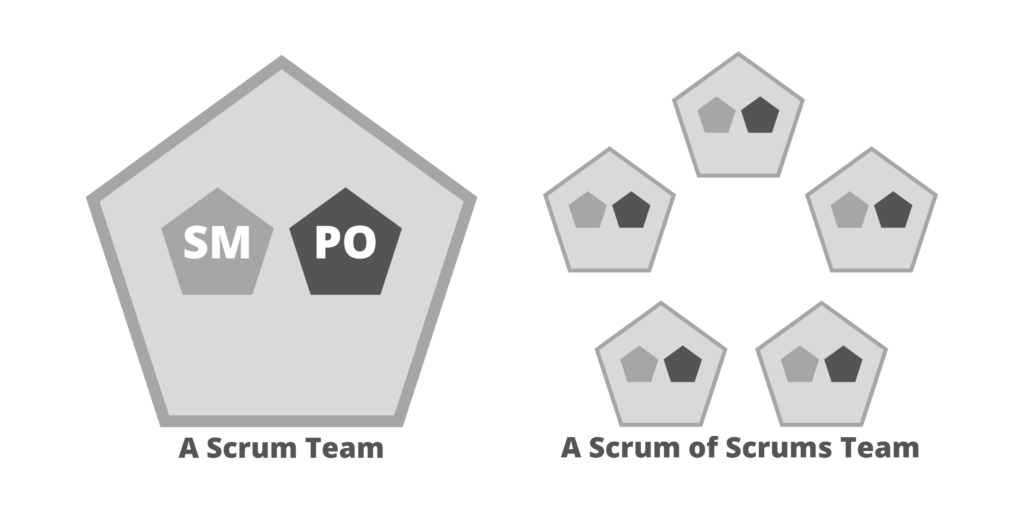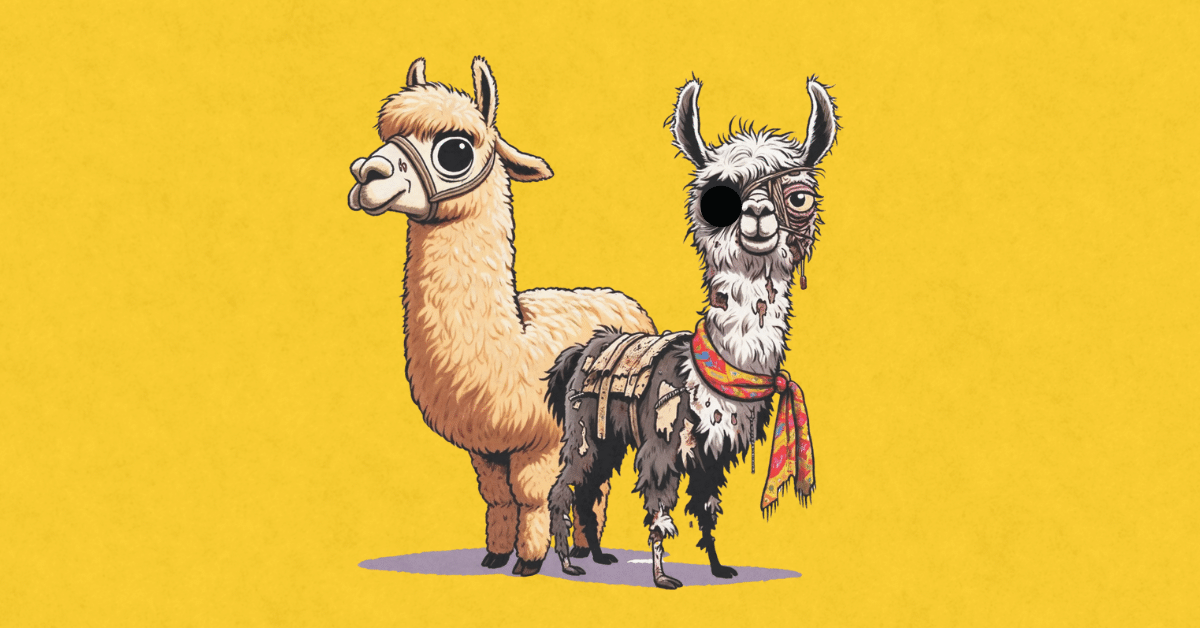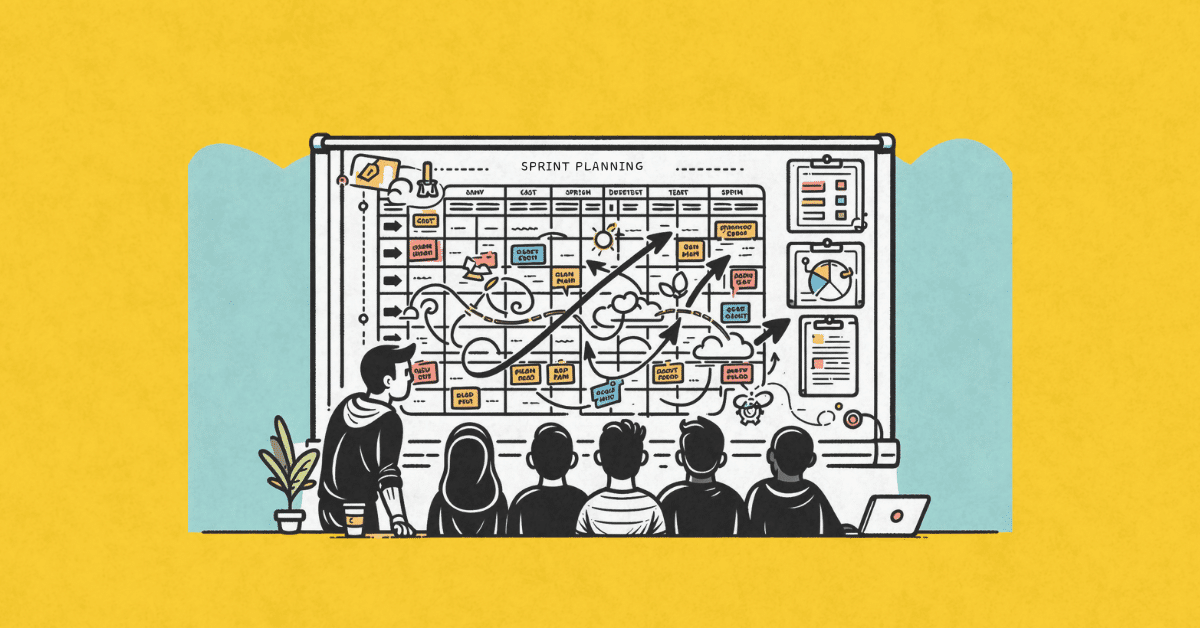Scrum@Scale is a framework designed to efficiently coordinate the networks of Scrum Teams towards achieving shared goals, while promoting a “minimum viable bureaucracy.” It is essentially a scaling framework that extends the core Scrum principles to large groups of teams working together on a product or project. This framework aims to create a well-aligned and well-coordinated organization, capable of delivering high-quality products in a predictable manner.
History of Scrum@Scale
Scrum@Scale was created by Dr. Jeff Sutherland, one of the co-creators of Scrum, to address the challenges of scaling Scrum to a larger organization while keeping the simplicity and effectiveness of pure Scrum. It is rooted in the early implementations of Scrum by Sutherland where scaling patterns were utilized. The framework has been evolving over the years to help organizations navigate the complexities associated with large-scale agile implementations.
Framework Components

Roles
In Scrum@Scale, all the team roles in “vanilla Scrum” are present and have the same accountabilities. Scrum@Scale adds two additional accountabilities that support work across multiple teams. These roles are:
- Scrum of Scrums Master (SSM): Responsible for coordinating the efforts of multiple Scrum teams, acting as a liaison to resolve impediments or inter-team conflicts, and ensuring that each team has the necessary resources.
- Chief Product Owner (CPO): Tasked with setting the overall product direction, working alongside the SSM to align all teams towards common goals, and maintaining a backlog of features.
Note: As an organization scales to large enterprise organizations, there might be additional “Scrum of Scrum of. Scrum … Masters” and Chief Chief Chief Product Owners. These roles will provide the same support just at different levels of Scrum. While Scrum@Scale famously refers to these roles as “Scrum of Scrum of Scrums Masters” or “Chief Chief Chief Product Owners”, in reality, very few organizations follow this nomenclature. The specific job titles will vary from organization to organization, but the responsibilities are consistent.
Events
Additionally, Scrum@Scale adds two events that support cross-team coordination, prioritization, and focus. These events include:
- The Scaled Daily Scrum (SDS): A coordination event among representatives of different Scrum teams to ensure alignment and proper flow of information.
- Executive MetaScrum Event: A forum for strategic discussions and alignment across the entire organization, involving leadership and key stakeholders.
While these two events comprise the start of scaling, other scaled events such as a Scaled Retrospective and Scaled Review might be implemented and utilized on an as-needed basis to support the scaled delivery of valuable product.
Scrum Master Cycle and Product Owner Cycle
The Scrum Master Cycle and the Product Owner Cycle are two core components of Scrum@Scale, encompassing different modules aimed at ensuring effective coordination, continuous improvement, and clear product direction. These cycles help in balancing the “how” and the “what” aspects of the projects, ensuring that the teams have the necessary resources and clarity on the product goals.
The Scrum Master Cycle
The Scrum Master Cycle is often referred to as the “how” phase in the Scrum@Scale framework. This cycle revolves around the operational aspects of delivering value, ensuring that the Scrum teams have the necessary resources, and that the processes are optimized. The modules within this cycle are designed to facilitate continuous improvement, coordinate efforts across different teams, ensure that the product is successfully delivered, and feedback is captured for future iterations. Here are the five modules contained in the Scrum Master Cycle:
- Team-Level Process: Focuses on the practices and processes at the individual team level, ensuring they are aligned with Scrum principles and are conducive to delivering value. (Shared between the Product Owner and Scrum Master Cycle)
- Continuous Improvement and Impediment Removal: Aims at identifying, prioritizing, and removing impediments, and fostering a culture of continuous improvement within and across teams.
- Cross-Team Coordination: Ensures effective communication and coordination among various Scrum teams, especially when there are dependencies or shared objectives.
- Deployment: Involves the processes and practices related to delivering increments of the product or service in a reliable and sustainable manner.
- Product and Release Feedback: Captures and analyzes feedback from each release to inform future planning and improvement efforts. (Shared between the Product Owner and Scrum Master Cycle)
- Metrics: Ensures the organization is measuring and tracking the proper team and product metrics to complete the feedback loop. (Shared between the Product Owner and Scrum Master Cycle)
The Product Owner Cycle
The Product Owner Cycle focuses on the “why,” defining and aligning the goals and the overall vision of the product or service. It is centered around ensuring that the efforts of the Scrum teams are directed towards delivering maximum value to the stakeholders and the end-users. Here are the six modules in this cycle:
- Team-Level Process: Ensures that the product vision and goals are well-understood and pursued by each Scrum team. (Shared between the Product Owner and Scrum Master Cycle)
- Strategic Vision: Establishes a long-term vision for the product, providing a broader context for the teams’ efforts.
- Backlog Prioritization: Involves prioritizing the product backlog items based on value, risk, and other relevant factors.
- Backlog Decomposition and Refinement: Breaks down and refines the backlog items to ensure they are ready for implementation.
- Release Planning: Plans upcoming releases of large chunks of work to ensure a steady flow of value delivery, aligned with the strategic vision.
- Product and Release Feedback: Collects and analyzes feedback on the product and the releases to inform future prioritization and planning. (Shared between the Product Owner and Scrum Master Cycle)
- Metrics: Ensures the organization is measuring and tracking the proper team and product metrics to complete the feedback loop. (Shared between the Product Owner and Scrum Master Cycle)
Leadership in Scrum@Scale
In Scrum@Scale, leadership plays a pivotal role in orchestrating the seamless collaboration across various Scrum teams and ensuring alignment with organizational objectives. Leadership roles are designed to foster a culture of accountability, continuous improvement, and value-driven delivery at scale. They act as the linchpin that connects the individual Scrum teams with the broader organizational goals, ensuring that the scaled Scrum implementation remains effective and aligned with the strategic vision. The following are the key leadership roles in Scrum@Scale:
- Executive Action Team (EAT): A leadership team responsible for transforming the organization in alignment with Scrum@Scale principles, resolving impediments escalated from teams, and ensuring a conducive environment for Scrum@Scale implementation.
- Executive MetaScrum Forum: A broader forum potentially involving some members of the Executive Action Team and other key stakeholders, focused on strategic alignment, priority setting, and overall organizational backlog management.
Scrum of Scrums

The Scrum of Scrums is a collaborative assembly of individuals from different Scrum teams, all working together towards the delivery of a product. It emerges multiple teams are working on the same outcomes and need to coordinate. Each Scrum team operates independently to a great extent, but the Scrum of Scrums ensures that there’s a common platform for addressing cross-team dependencies, aligning on shared objectives, and resolving issues that span across multiple teams.
The emphasis on forming a Scrum of Scrums only when absolutely necessary aligns with the principle of maintaining a “minimum viable bureaucracy.” It champions the idea of preserving the autonomy and self-organization of individual Scrum teams, while providing a mechanism to synchronize efforts when the complexity of the product demands it. This approach promotes efficiency, minimizes overhead, and fosters a culture of open communication and collective problem-solving, all while keeping the larger organizational goals in sight.
Additional Learning for Scrum@Scale
If you would like to learn more about Scrum@Scale, check out our additional courses. Much of our content is offered free or at a reduced rate to the public.
- 1800-01: Scrum@Scale in a Nutshell – Equitable Scrum and Agile Training – CAVU
- Scrum@Scale Launchpad – Equitable Scrum and Agile Training – CAVU
- https://discover.cavu.co/product-category/scaling
References
Scrum@Scale Guide: Version 2.1 — February 2022. Copyright © 2006-2022 Jeff Sutherland and Scrum Inc., All Rights Reserved. Scrum@Scale is a registered trademark of Scrum Inc. This guide is released under Creative Commons 4.0 Attribution-Sharealike License.















